BERLIN
The short, bearded man in the tutu wanders onstage, an accordion strapped to his back like a rucksack. A tall dancer feigns clumsiness with a slyly graceful gawkiness that would do Buster Keaton proud, stumbling around a ladder and a chair to the delight of the audience. Sasha Waltz & Guests, named for its choreographer, is the house dance ensemble at Radialsystem V (Holzmarktstr, 33; radialsystem.de), a performance space that opened in 2006 in an old brick Gothic pumping station on the Spree River in Berlin.
Even though Berliners know about the dance troupe, visitors often miss its frequently sold-out performances in the towering space of the former machine hall and boiler room of the pumping station. Radialsystem V, kilometers away from the German capital’s grand boulevard of Unter den Linden, is surrounded by a cluster of gritty nightclubs near the Ostbahnhof train station. During warmer months, a casual passer-by without a ticket to the night’s performance can enjoy a cappuccino with the dance aficionados on the waterfront terrace, but the main draw is the celebrated Waltz and her dancers, interlocked in twisted, shifting embraces.
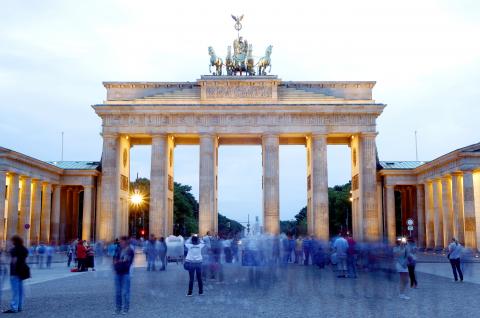
Photo: Bloomberg
Another institution that is often overlooked by visitors but treasured by locals is the Martin-Gropius-Bau (information on exhibitions can be found at berlinerfestspiele.de), which sits along the former path of the Berlin Wall, and has been through a number of transformations since it was opened as a museum for the applied arts in 1881. It is named after one of its architects; Gropius was the great-uncle of the Bauhaus founder Walter Gropius, whose support helped get the war-damaged structure, with its old-fashioned Classical and Renaissance touches, rebuilt and opened as an exhibition space. From this month to January, the Martin-Gropius-Bau will feature the French abstract painter Pierre Soulages; and from next month until January more than 200 works by Laszlo Moholy-Nagy.
— NICHOLAS KULISH
COPENHAGEN
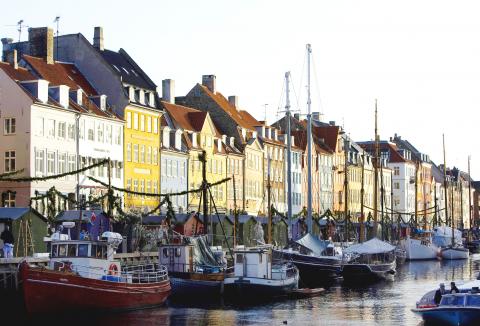
Photo: Bloomberg
To check out new and traditional indie films from Denmark and elsewhere, plop into a chair in the Danish Film Institute’s movie theater, which is known as the Cinematheque. Each month the Cinematheque (dfi.dk/English.aspx) shows scores of international auteur, avant-garde, experimental and art-house films and showcases one feature film and one documentary. (This month’s showcase selections are Jane Campion’s Bright Star and Peter Kerekes’ Cooking History.) The institute also holds special theme nights that combine a film with a bar and DJ-fueled party. Friday Late Night features a music-based film, and Psyched Out is for fans of freaky, underground movies.
The sound track shifts to strings, horns and pianos during the midweek Onsdagskoncerter (onsdagskoncerter.dk), a year-round series of intimate weekly classical music performances held every Wednesday at a rotation of Copenhagen’s loveliest old buildings. With music provided by students of the Royal Danish Academy of Music, the free shows are a chance to discover centuries-old churches, museums, government halls and foreign embassies that lie off the tourists’ normal route.
“No more monuments and museums!” is the motto for the 5-year-old CPH: Cool (cphcool.dk), a walking-tour outfit dedicated to unveiling the young, fashionable side of the Danish capital. The group’s two-hour design tour features all forms of Scandinavian style, from furniture to clothing to lighting to bicycles. You’ll cross paths with creations by Arne Jacobsen, Hans Wegner and other stars of Danish homeware design while discovering emerging figures like the Dadaist fashion master Henrik Vibskov (whose clothing seems tailored with Bjork in mind) and the design impresario Rolf Hay (whose namesake Hay boutique is awash in homewares by the nation’s most adventurous young creators).
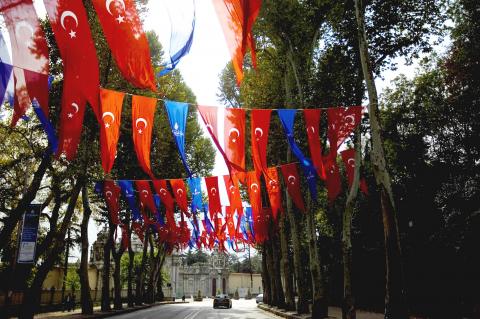
Photo: Bloomberg
— SETH SHERWOOD
ISTANBUL
Gitarcafe (gitarcafe.com) on Istanbul’s Asian shore is a small music hall and cafe-bar that has become a fixture among music lovers in the city. Housed in a 19th-century building, the intimate performance space — lighted by candles and a chandelier that dangles from the lofty ceiling — is a cozy setting in which to hear a range of mostly acoustic music, from master musicians like the Italian guitarist Carlo Domeniconi to traditional Turkish folk bands.
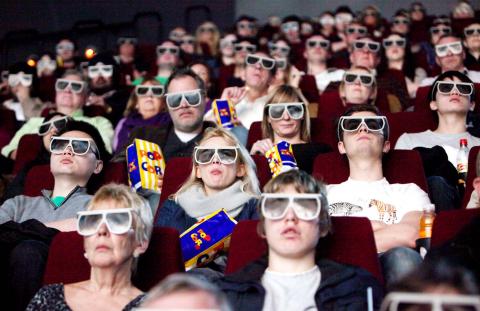
Photo: Bloomberg
Founded in 2000 by Onok Bozkurt, a classical guitar player, the cafe encourages audience participation with open-mic events and workshops. Ferries for the Kadikoy neighborhood, near the cafe, leave from several city docks, and from there, a short walk will take you to the music hall, which is nestled among other cafes and restaurants on lively Sakizgulu Street.
On the European side of the Bosphorus, two gallery owners — Yesim Turanli and Azra Tuzunoglu — have created a walking tour that focuses on the burgeoning Turkish contemporary art scene in Tophane, an industrial district during Ottoman times that has become home to many small galleries that feature the works of up-and-coming artists like Mehmet Ali Uysal, Burak Delier, Servet Kocyigit, Hamra Abbas and Volkan Aslan. The self-guided Tophane Art Walk is updated regularly on Turanli and Tutunoglu’s website (tophaneartwalk.com), with listings of exhibitions at the various galleries.
— SEBNEM ARSU
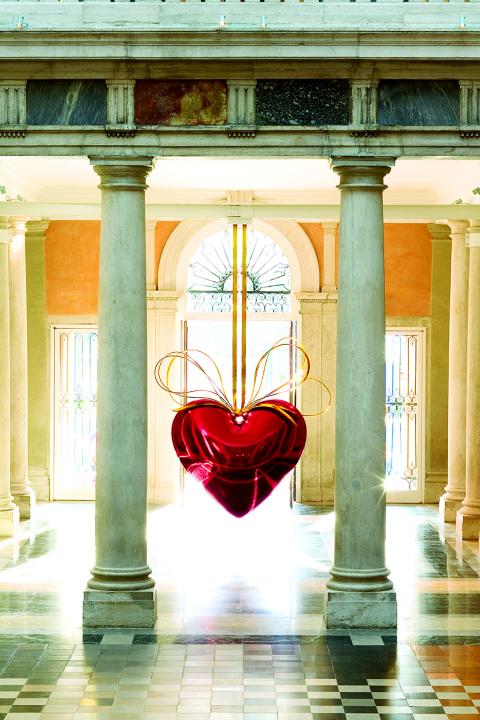
Photo: Bloomberg
LONDON
On a recent Sunday, nearly 10,000 Londoners gathered at Canary Wharf as part of a guerrilla movie-screening event called Secret Cinema. They were herded onto buses, where actors playing flight attendants told them they would be starting a new life on a new planet. They were then taken to a warehouse that had been converted to resemble the neon-lighted Chinatown from the 1982 Ridley Scott movie, Blade Runner.
“By the time we showed the film,” said Fabien Riggall, the founder of Secret Cinema, which has been holding mass screenings since 2007, “people were fully immersed.”
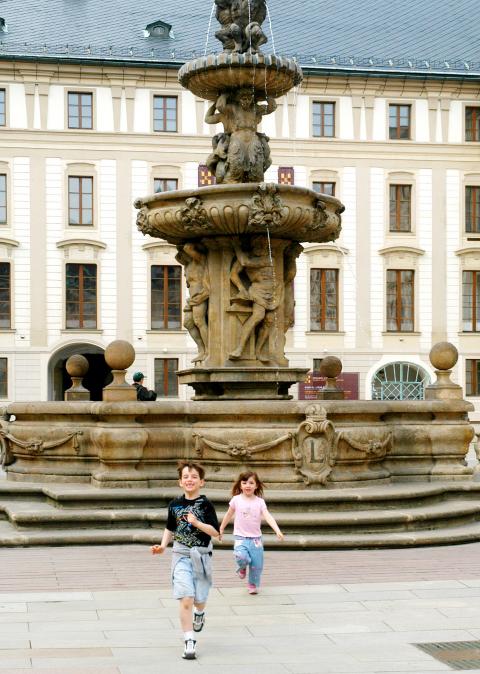
Photo: Bloomberg
Despite the size of these gatherings — last month 15,000 people put on full Bedouin gear and took a train across London for a screening of Lawrence of Arabia — the events appear to be something of a cult secret among Londoners. But that doesn’t mean the occasional tourist can’t join in.
The next event — the details of which remain closely guarded, Riggall said, “because that’s kind of the whole point” — will be around Halloween. (For updates: secretcinema.org.)
Secret Cinema doesn’t have a monopoly here on cultural events in unexpected spaces. In 2008, the theater director Adam Spreadbury-Maher was walking past the Cock Tavern, a turreted pub nestled among chain stores in Kilburn, an unremarkable part of north London, and decided it would be a good space for drama. The next year, the Cock Tavern Theater was born.
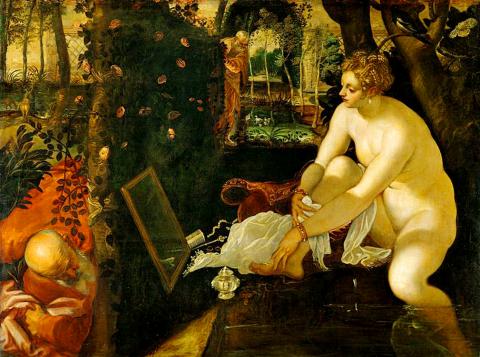
Photo: Bloomberg
A short journey on the Underground from the mainstream theaters of London’s West End, the 54-seat Cock Tavern evokes Off Broadway with the added bonus of foaming pints. It specializes in new plays and offbeat operatic productions — the most buzzed-about was an update of Puccini’s La Boheme, in which the singers mingled with drinkers. The opera, which became known as La Boheme in a Pub, was so popular that it was transferred to the more orthodox Soho Theatre, where a brief summer run was so successful that it will return in January for a month. This fall the Cock Tavern will feature six plays by the British playwright Edward Bond (cocktaverntheatre.com).
— RAVI SOMAIYA
MOSCOW
Russia has some spectacular museums — the Hermitage in St Petersburg evokes gasps at nearly every turn — but they tend to have a stuffy, staid feel. The exhibit halls are typically watched over by the kind of matrons who wag their fingers when you get too close to a Kandinsky.
Not so at the Garage Center for Contemporary Culture, one of Russia’s first attempts to present modern art with a modern sensibility. At nearly 9,290m2, the Garage (19A Obraztsova Street; 7-495-645-0520; garageccc.com/eng; adult admission, about US$10) is housed in a former bus depot that was designed by the Constructivist architect Konstantin Melnikov in the 1920s. The project was spearheaded by Dasha Zhukova, a 29-year-old fashion editor and the girlfriend of one of Russia’s richest men, Roman Abramovich. In the two years it’s been open, it’s already managed to attract a host of major exhibitions.
The cavernous space is ideal for large sculptures — for a recent show, giant phantasmagoric mushrooms were laid out across part of the floor — and paintings, including pieces by heavyweights like Mark Rothko. The staff members are young and welcoming (no stern matrons here) and, in a relative rarity for Russia, generally
speak English.
For art that’s truly underground, take a detour to one of the newest stops in the Moscow subway system, where the stations are cultural landmarks all their own. At the Dostoyevsky station, the mosaics are so elaborate that before it opened last spring, some officials expressed concern that depictions of scenes from the author’s novels would unnerve passengers. (One piece shows the main character from Crime and Punishment, the mentally unstable Raskolnikov, wielding an ax over a cringing woman.)
The Dostoyevsky stop is finished in marble, offering a striking contrast to the industrial tile of stations in New York and elsewhere. And after roaming through Dostoyevsky, you can ride to two adjacent and newly opened stations, Trubnaya and Marina Rosha. They are just as lavish — though without the ominous undercurrent.
— CLIFFORD J. LEVY
PRAGUE
Pack your hiking boots: While Prague’s spire-studded Old Town hosts most mainstream events, underground culture usually requires a trek. East of Old Town, the grungy Zizkov neighborhood has hills topped with cobblestone lanes and the odd nuclear bunker, as in the wondrous Bunkr Parukarka (parukarka.eu), on Parukarka hill, just north of Olsanske Namesti tramway station. Built in the mid-1950s, the space — or a small part of it — functions as a club today. An 11m-tall rock-climbing wall is circled by a long staircase as it descends to the shelter (each lead-lined bunker door weighs more than 4.5 tonnes, according to the manager, Miki Tesinsky). Bands and DJs play, and the walls are often used for temporary photo exhibitions.
Architecture buffs will also have to take a trek to see some of the city’s most distinctive buildings. While Gothic and Baroque are most visible in the historic center, the best examples of diamond-like Czech Cubism hide to the south. Take the subway’s B line to Karlovo Namesti station and exit at Namesti Pod Emauzy, then walk south for 10 minutes along the Vltava riverbank. On the other side of the 1872-era railway bridge is the back view of Villa Kovarovic, built in 1913 by Josef Chochol, which displays the movement’s characteristic hexagonal forms; directly to the north and south are buildings by Otakar Novotny and Emil Kralicek, respectively, according to the authoritative Prague 20th Century Architecture guidebook. Another five minutes south will take you to Chochol’s “triple house,” a complex of three Cubist buildings facing the river; they are not open to the public.
For a Cubist view from within, walk back, turn right on Libusina Street to view Villa Kovarovic’s front facade, then right on Vnislavova, and again right on Neklanova, which will lead you to Chochol’s 1914 Hodek building at the corner with Premyslova. The building is a rare Cubist apartment house with an extremely common Prague feature on the ground floor: a pub.
— EVAN RAIL
VENICE
Think you’ve seen every Tintoretto canvas there is to see in Venice? Oddly, the church of Madonna dell’Orto, where the 16th-century artist is buried, is not on many visitors’ itineraries. The church, which is not far from the house on the Fondamenta dei Mori where Tintoretto died in 1594, is in a largely untrodden section of the Venetian neighborhood of Cannaregio. Besides visiting Tintoretto’s resting place in the chapel to the right of the main apse of the Madonna dell’Orto church, you can view some seldom-seen works, including the gargantuan Worship of the Golden Calf and Last Judgment, both of them in the presbytery. Another work, the lush Presentation of the Virgin in the Temple, is on the right aisle above the door to the sacristy.
If you’re in the mood for something more modern — yet similarly undiscovered — head over to the Fondazione Emilio and Annabianca Vedova, (fondazionevedova.org/en) at the waterfront esplanade in the Dorsoduro neighborhood. It features the work of one of Italy’s most renowned 20th-century artists, Emilio Vedova, who died in 2006. The museum has two parts. One occupies the studio where he worked for the last 30 years of his life — a former 16th-century boatyard that opened in June of this year and features a series of his sculptures. The other inhabits a renovated space in the adjacent Magazzini del Sale, former salt warehouses where Vedova also had a studio. That space opened in June 2009 after a restoration by the architect Renzo Piano, who consulted with Vedova on the design for many years.
— ELISABETTA POVOLEDO

The unexpected collapse of the recall campaigns is being viewed through many lenses, most of them skewed and self-absorbed. The international media unsurprisingly focuses on what they perceive as the message that Taiwanese voters were sending in the failure of the mass recall, especially to China, the US and to friendly Western nations. This made some sense prior to early last month. One of the main arguments used by recall campaigners for recalling Chinese Nationalist Party (KMT) lawmakers was that they were too pro-China, and by extension not to be trusted with defending the nation. Also by extension, that argument could be

Aug. 4 to Aug. 10 When Coca-Cola finally pushed its way into Taiwan’s market in 1968, it allegedly vowed to wipe out its major domestic rival Hey Song within five years. But Hey Song, which began as a manual operation in a family cow shed in 1925, had proven its resilience, surviving numerous setbacks — including the loss of autonomy and nearly all its assets due to the Japanese colonial government’s wartime economic policy. By the 1960s, Hey Song had risen to the top of Taiwan’s beverage industry. This success was driven not only by president Chang Wen-chi’s

Last week, on the heels of the recall election that turned out so badly for Taiwan, came the news that US President Donald Trump had blocked the transit of President William Lai (賴清德) through the US on his way to Latin America. A few days later the international media reported that in June a scheduled visit by Minister of National Defense Wellington Koo (顧立雄) for high level meetings was canceled by the US after China’s President Xi Jinping (習近平) asked Trump to curb US engagement with Taiwan during a June phone call. The cancellation of Lai’s transit was a gaudy

The centuries-old fiery Chinese spirit baijiu (白酒), long associated with business dinners, is being reshaped to appeal to younger generations as its makers adapt to changing times. Mostly distilled from sorghum, the clear but pungent liquor contains as much as 60 percent alcohol. It’s the usual choice for toasts of gan bei (乾杯), the Chinese expression for bottoms up, and raucous drinking games. “If you like to drink spirits and you’ve never had baijiu, it’s kind of like eating noodles but you’ve never had spaghetti,” said Jim Boyce, a Canadian writer and wine expert who founded World Baijiu Day a decade